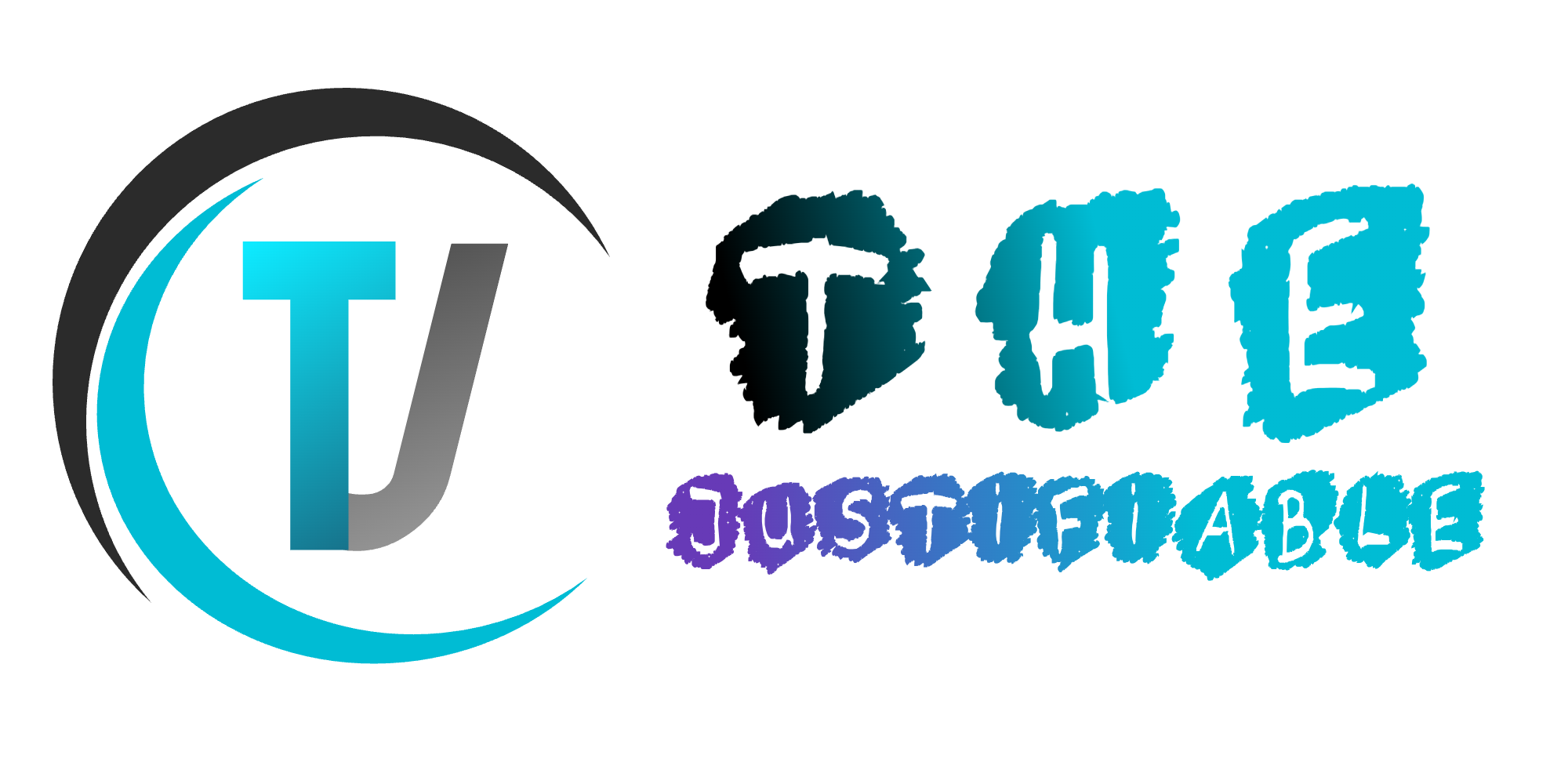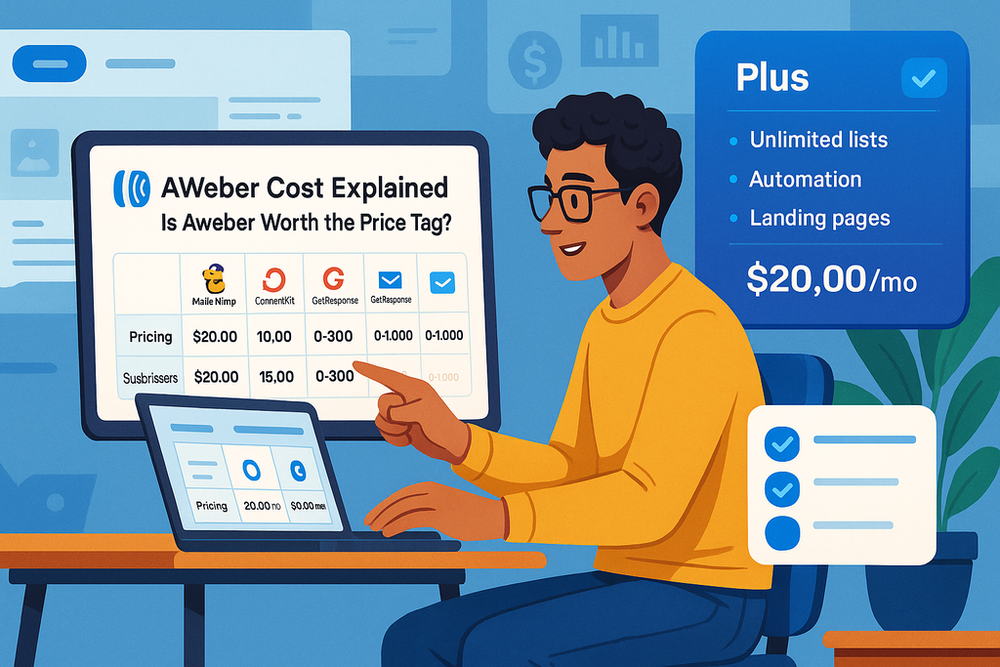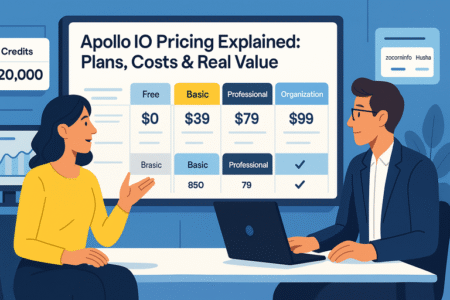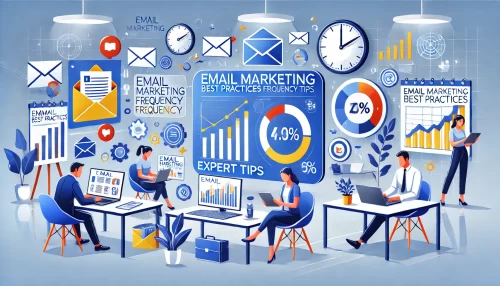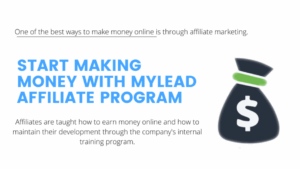Table of Contents
Aweber cost is one of the first things people look at when choosing an email marketing platform. Is the free plan enough to get started, or do the paid plans actually offer the kind of value that makes the monthly fee worth it?
How does Aweber stack up against competitors when it comes to features, pricing, and long-term affordability? And most importantly, is Aweber worth the price tag for businesses, creators, and online stores trying to grow?
In this guide, we’ll break down every detail of Aweber’s pricing, compare it to alternatives, highlight the hidden value you might not notice at first glance, and explore whether the investment makes sense for different types of users.
Breaking Down Aweber Cost and Pricing Plans
Understanding Aweber cost starts with knowing what each plan includes and where the value lies. Let’s break it down clearly so you can decide which tier makes sense for you.
Free Plan Features and Limitations
The free plan is designed for beginners testing email marketing without financial risk. You can manage up to 500 subscribers and send emails, but there are limitations that quickly push many toward upgrading.
- You get one list only, which restricts segmentation.
- Aweber branding is included in all your emails.
- Limited access to automation and landing pages (just one per account).
- Reporting tools are basic, meaning you don’t get deep insights into performance.
In practice, this plan works for hobby projects or very small side hustles. But once you start growing, the lack of automation and branding control can make your campaigns look less professional. If you’re serious about list building, I suggest seeing this free tier as more of a test drive.
Lite Plan: What You Get for the Monthly Fee
At $12.50/month when billed annually, the Lite plan gives you room to experiment while still keeping costs low. It includes:
- Up to 3 landing pages and 3 automations.
- One email list, which is still restrictive.
- Basic segmentation with one custom segment.
- 24/7 support access.
The catch here is scale. You can send up to 10x your subscriber count in emails per month, which is plenty for small lists.
The downside is the lack of advanced reporting and the fact that you can’t remove Aweber branding. This plan suits creators who are just starting to sell products or courses but don’t yet need advanced tools.
Plus Plan: Advanced Features and Added Value
At $20/month (annual billing), Plus is where Aweber really opens up. It includes everything from Lite but removes many restrictions.
- Unlimited email lists, landing pages, automations, and users.
- Advanced reporting and subscriber insights.
- Priority 24/7 support.
- Ecommerce features like sales tracking with low transaction fees.
- Branding removal for a polished, professional look.
This plan is the sweet spot for serious bloggers, ecommerce sellers, and businesses who need robust automations.
From my experience, the unlimited nature of this plan saves headaches down the line because you’re not constantly worrying about outgrowing features.
Comparing Monthly vs Annual Billing Savings
Aweber offers both monthly and annual billing. Annual billing saves you the equivalent of up to 4 months per year. For example:
- Lite: $19.99/month billed monthly vs $12.50/month billed annually.
- Plus: $29.99/month billed monthly vs $20/month billed annually.
If you’re unsure whether you’ll stick with Aweber long term, monthly makes sense. But if you’re already committed to email marketing, the annual option is a no-brainer — it locks in significant savings without reducing features.
How Aweber Cost Compares to Competitors
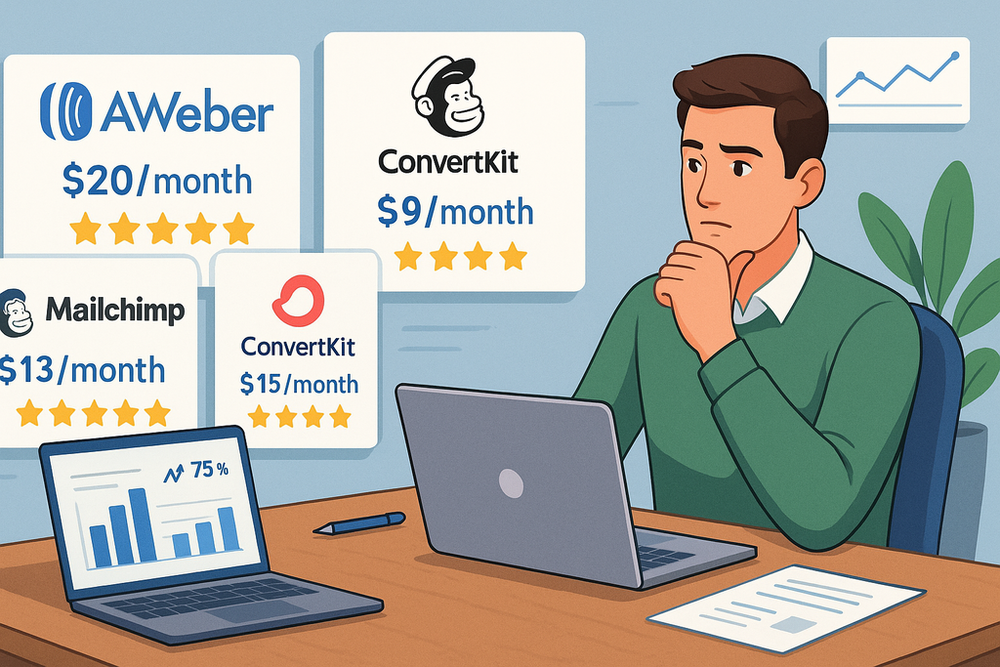
Price alone doesn’t tell the whole story. The real question is whether Aweber cost delivers more value compared to what competitors offer.
Aweber vs Mailchimp: Which Delivers Better Value
Mailchimp is often the first platform people try because of brand recognition. Its free plan allows up to 500 contacts but caps sends at 1,000 per month — much tighter than Aweber’s free send allowance.
- Mailchimp’s paid plans start at $13/month, slightly higher than Aweber Lite.
- Advanced automations and analytics in Mailchimp require higher tiers, which can quickly jump past $60/month.
- Aweber includes more unlimited features earlier, such as landing pages and automations.
If you only need a lightweight solution, Mailchimp feels simpler. But for long-term value at entry-level pricing, Aweber gives you more room to grow without hitting paywalls.
Aweber vs Kit: Pricing for Creators and Bloggers
Kit (formerly ConvertKit) positions itself as the creator’s tool. Its free plan allows up to 1,000 subscribers, which beats Aweber’s 500 limit. But once you upgrade:
- Kit starts at $15/month, with advanced automation only available in higher tiers.
- Landing pages are strong, but ecommerce tools require integrations.
- Aweber’s $20 Plus plan offers broader ecommerce and reporting features at a lower cost than ConvertKit’s Creator Pro plan.
If your focus is selling courses and you like a clean, simple interface, Kit shines. But if you want all-in-one flexibility with fewer hidden costs, Aweber edges it out.
Aweber vs GetResponse: Features vs Cost Balance
GetResponse is known for its powerful automation builder and webinar tools. Pricing starts at $19/month for 1,000 subscribers, which is close to Aweber’s Plus plan.
- GetResponse includes webinars in higher plans, something Aweber doesn’t offer.
- Aweber is simpler to set up and manage, making it less overwhelming for beginners.
- GetResponse’s automation builder is more advanced, but Aweber covers the essentials at a friendlier price.
Here, the choice depends on whether you need advanced features like webinars or want a streamlined tool at lower cost. For many small businesses, Aweber offers the better balance.
Key Takeaways from Competitor Comparisons
- Aweber cost is consistently competitive at the entry and mid-tier levels.
- You avoid hidden paywalls that Mailchimp and ConvertKit introduce.
- It’s simpler than GetResponse but covers enough ground for most businesses.
- If you’re scaling fast, the unlimited nature of Aweber’s Plus plan is a strong long-term play.
The Hidden Value Behind Aweber Cost
When people first glance at Aweber cost, it’s easy to see only the monthly fee. But the real value comes from the features that save you money and time you’d otherwise spend juggling multiple tools.
Unlimited Email Sends and Subscriber Limits Explained
One of the biggest advantages with Aweber is how it handles email sends. Unlike some platforms that cap your sends at a strict number per month, Aweber allows generous sending limits.
- Lite plan: You can send 10x your subscriber count per month. For example, if you have 500 subscribers, you can send up to 5,000 emails.
- Plus plan: This opens up to 12x sends and practically removes the stress of running out of quota.
I’ve found this particularly useful when running multiple campaigns in a single month — such as weekly newsletters plus sales promotions.
On platforms like Mailchimp, you might be hit with upgrade prompts if you push those limits, but with Aweber you can confidently schedule without micromanaging your quota.
Subscriber limits also scale predictably, so you’re not blindsided by sudden jumps in pricing tiers. This makes budgeting far less stressful if your list is steadily growing.
Built-In Landing Pages, Sign-Up Forms, and Automation
Here’s where Aweber saves you from paying for extra tools. Inside your dashboard, you can create landing pages without needing services like Leadpages or Unbounce.
- From the dashboard, click “Landing Pages > Create a Landing Page” and you’ll find templates you can customize.
- Sign-up forms are drag-and-drop, making it easy to connect them directly with your lists.
- Even in the Lite plan, you get automations. For example, you can set up a welcome email that triggers instantly when someone subscribes.
These built-in tools are a hidden cost-saver. If you were to piece them together elsewhere, you’d easily spend $30–$70/month on third-party services.
I suggest exploring the automation library early — even simple workflows like “If subscriber clicks a link, tag them with interest” can dramatically improve targeting.
Ecommerce and Integrations Without Extra Charges
If you’re selling digital or physical products, Aweber integrates with platforms like Shopify, WooCommerce, and Etsy without making you pay extra for an add-on. You also get ecommerce features like:
- Cart abandonment emails.
- Automated product recommendations.
- Transactional emails with low fees.
What I like here is that Aweber doesn’t lock these behind premium tiers, which is common with other providers.
A small Etsy seller, for instance, can start using ecommerce emails without needing a $50/month upgrade. This levels the playing field for solopreneurs.
Customer Support and Training Resources Included
Support is one of those things you don’t think about until you need it — and Aweber shines here.
- 24/7 live support is available in all paid plans.
- There’s a library of tutorials and live webinars to help you learn.
- They even include onboarding calls if you choose their Done For You setup.
I’ve leaned on support when troubleshooting integrations, and the response times were far quicker than I’ve experienced with Mailchimp.
This kind of included support is part of Aweber’s hidden value — if you were hiring consultants for help, you’d be paying much more than the subscription fee.
Common Pain Points With Aweber Pricing
Now, let’s balance the picture. Aweber cost has advantages, but there are also real challenges users run into. Recognizing these early helps you make a smarter decision.
When Aweber Cost Becomes Expensive for Small Lists
Here’s the irony: Aweber’s free plan is generous, but as soon as your list grows even a little, the jump can feel steep. Moving from free to Lite at $12.50/month doesn’t sound bad, but if your list is still under 200 subscribers, that cost-per-subscriber can feel high.
For hobby bloggers or micro-creators, it may feel like paying for unused power. At this stage, you need to weigh whether email marketing revenue is covering the expense or if a simpler free tool works better until you grow.
Limitations of the Free Plan That Force an Upgrade
The free plan caps you at one list and one landing page. That’s enough for testing, but not sustainable once you need:
- Different lists for customers vs leads.
- Multiple landing pages for separate campaigns.
- Branding removal for a professional look.
For example, I once ran a webinar funnel on the free plan, but the single-list restriction made it messy to separate registrants from my newsletter subscribers. That frustration alone pushed me into upgrading.
Extra Costs for Advanced Features in Other Platforms
One thing users sometimes overlook is how Aweber avoids nickel-and-diming you compared to competitors. Mailchimp and ConvertKit often gate advanced automation or analytics behind higher plans.
But there’s still one caveat: Aweber’s Done For You setup service costs $79 (discounted from $599). While useful, it can feel like an unexpected expense if you thought setup would be fully included.
That said, many people prefer investing in that upfront service to save hours of tech struggles. It’s not mandatory, but it’s worth being aware of.
Long-Term Affordability Concerns for Scaling Businesses
As your subscriber list climbs into the thousands, costs can add up. Aweber pricing scales with list size, and even with unlimited features, you may find yourself paying $50–$150/month as your business grows.
At that level, some users start reconsidering whether platforms like GetResponse or ActiveCampaign, with their deeper automation and CRM features, offer better value.
Aweber’s strength lies in being simple and reliable, but for high-volume marketers, the simplicity may not justify the rising costs.
Is Aweber Cost Worth It for Different Users
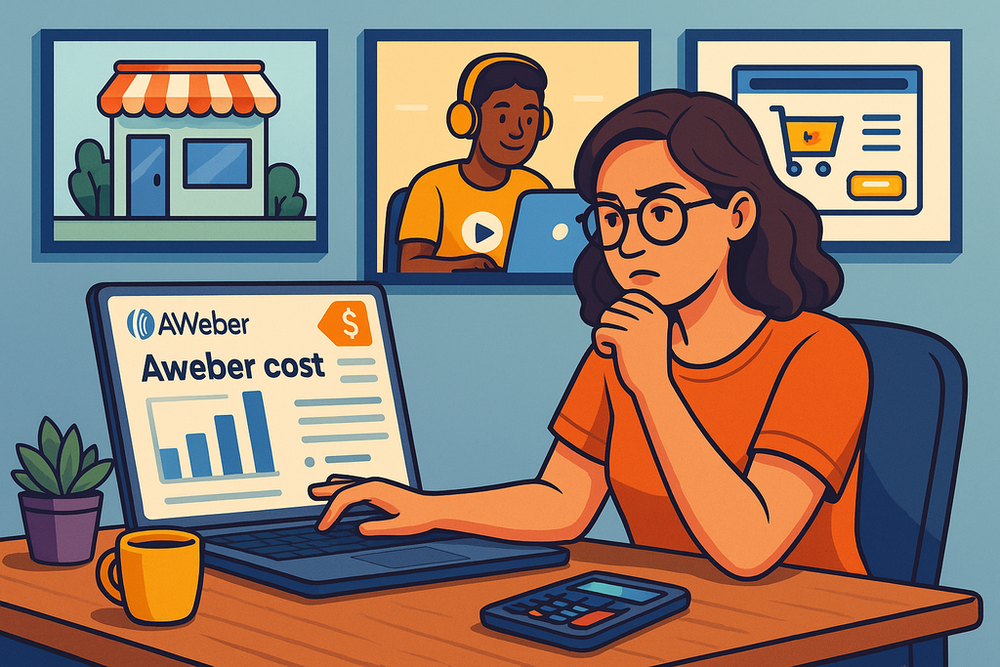
Aweber cost is only worth it if the features match your actual needs. Let’s break it down by user type so you can see where the value makes sense.
Small Business Owners and Local Brands
If you’re running a local bakery, yoga studio, or consulting business, Aweber gives you an affordable way to stay in touch with customers.
- Automated birthday emails or promotions can be set up in minutes.
- The Lite plan is often enough for local brands, especially when paired with the landing page builder to run seasonal campaigns.
- You won’t outgrow it quickly because even the Plus plan scales comfortably without forcing you into enterprise-level costs.
I believe the biggest perk here is the simplicity. You don’t need a tech team — you can hop into the dashboard, click “Campaigns > Create a Campaign,” and get an automated sequence running in under an hour.
Content Creators, Bloggers, and Podcasters
For creators, Aweber shines with its unlimited sending and ease of use. You can manage newsletters, freebie delivery, and podcast announcements all from one place.
- Use tagging to segment your audience — for example, separating readers who click on your “blogging tips” from those who click on your “personal stories.”
- Landing pages make it easy to grow your list without paying for a separate service.
- The Plus plan pays off if you’re monetizing via affiliate links or product launches because you’ll want advanced analytics to track ROI.
In my experience, Aweber feels creator-friendly because you don’t have to wrestle with advanced dashboards. It’s powerful, but still accessible.
Ecommerce Stores and Digital Product Sellers
If you sell products, Aweber’s ecommerce integrations make the cost worth it almost instantly.
- Shopify, WooCommerce, and Etsy integrations work out of the box.
- Abandoned cart emails help recover lost sales without extra fees.
- Transactional emails (like order confirmations) can run from the same platform.
For small shops, this means you can skip expensive ecommerce email platforms that charge higher transaction fees. I’d suggest going straight for the Plus plan because the advanced reporting helps track which emails actually drive sales.
Agencies and High-Volume Email Marketers
Agencies managing multiple clients benefit from Aweber’s unlimited list and user options in the Plus plan.
- You can separate client lists without paying per list like on other platforms.
- Unlimited users make collaboration easy if you have a team handling campaigns.
- Advanced segmentation ensures you’re sending targeted content, not just blasting the same thing to everyone.
At scale, costs do rise, but the ability to run multiple projects under one account can offset that. If you’re billing clients, the efficiency and features easily justify the expense.
Expert Tips to Maximize Aweber Cost Efficiency
Aweber cost doesn’t have to stretch your budget if you know how to squeeze value out of every dollar. Here are strategies I’ve found effective.
Choosing the Right Plan for Your Current Needs
Don’t jump to Plus unless you really need the advanced reporting or unlimited features. If you’re just testing the waters, the Lite plan may be enough. I usually recommend upgrading only when:
- You’re managing multiple lists.
- You want to remove Aweber branding for professionalism.
- You need deeper analytics to optimize campaigns.
Leveraging Free Tools Before Upgrading
The free plan can be surprisingly powerful if you’re just starting.
- Use the one free landing page to test a lead magnet idea.
- Take advantage of the automation limit by setting up a short but effective welcome series.
- Track engagement with the basic reporting before worrying about advanced analytics.
I suggest milking the free features fully before committing to paid plans. That way, when you upgrade, you’ll know exactly why you’re paying more.
Automating Campaigns to Get More Value for Money
Automation is where Aweber really pays for itself. Instead of manually sending emails, you can build workflows that run on autopilot.
- From the dashboard, click “Campaigns > Create a Campaign.”
- Start with prebuilt templates like “Welcome Series” or “Product Sale.”
- Add conditions, such as “If subscriber clicks link A, send follow-up email B.”
This saves hours and ensures subscribers get timely, relevant content — which directly boosts sales.
Tracking ROI to Justify Subscription Costs
The simplest way to make sure Aweber is worth it is to track your ROI (return on investment).
- Use built-in reporting to see which campaigns generate the most clicks and sales.
- Calculate revenue earned from email-driven sales and compare it to your monthly Aweber cost.
- If your $20/month plan drives even one extra product sale per week, it’s already paying for itself.
I advise treating email not as a cost but as a revenue-generating asset. When tracked properly, the math usually works in Aweber’s favor.
Final Verdict: Is Aweber Worth the Price Tag?
After breaking it all down, let’s answer the big question: is Aweber worth the price?
Best Use Cases Where Aweber Excels
- Small businesses that need simplicity without losing functionality.
- Creators who want affordable unlimited sending and clean automations.
- Ecommerce sellers who benefit from built-in cart recovery and integrations.
- Agencies managing multiple clients without hitting list caps.
For these users, Aweber cost is well worth the price tag.
Get started with Aweber today — test the features risk-free.
Situations Where Cheaper Alternatives Make Sense
If you’re just experimenting with email and not yet monetizing, sticking with a free tool like Mailchimp or Kit’s free tier may be smarter.
Also, high-volume businesses that need enterprise-level automation or CRM features may find better value with platforms like ActiveCampaign.
Pro Tip for Deciding if Aweber Fits Your Budget
Here’s a quick way to decide: calculate your potential earnings from email. If you can confidently expect even one or two conversions per month that exceed Aweber’s fee, it’s worth the investment. If not, stay on the free plan until you’re ready.
I believe Aweber sits in the sweet spot for most small-to-mid-sized users. It’s not the flashiest platform, but it’s reliable, easy to use, and avoids many of the hidden costs competitors sneak in. That predictability is why I often recommend it.

